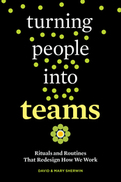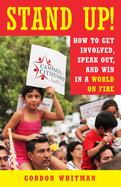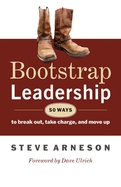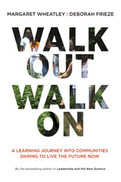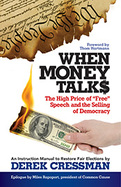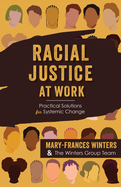Put the principles from Turning People into Teams: Rituals and Routines that Redesign How We Work into practice with the Turning People into Teams Toolkit by coauthors David and Mary Sherwin. These tools are in Adobe PDF, Microsoft Word, and Microsoft PowerPoint file formats. Some tools can be printed and shared; others can be adapted to your specific needs and application requirements. The new toolkit includes 27 rituals discussed in the book with 120 corresponding 1-2 page documents.
Format: downloaded zip file (8.1 MB)
Section 1: BETTER BEGINNNNGS (11 rituals and 55 documents)
Start the Team by Talking About the Team
● Ritual: What Do We Bring to the Team?
● Ritual: What Do We Value as a Team?
● Ritual: What Habits Do We Want as a Team?
What Problem Are We Trying to Solve?
● Ritual: What Problem Are We Trying to Solve?
● Ritual: What Do We Know? What Do We Need to Learn?
What Does Success Look Like?
● Ritual: What Does Success Look Like?
● Ritual: What If We Don’t Succeed as a Team?
● Ritual: What Is Our Team Expected to Do?
● Ritual: What Should We Celebrate as a Team?
Plan the Kickoff With Your Team
● Ritual: Who Gets Invited?
● Ritual: What Activities Should Be in the Kickoff?
Section 2: WE'RE STUCK, NOW WHAT? (11 rituals and 40 documents)
Create the Right Kind of Conflict
● Ritual: Can I Give You Some Feedback?
● Ritual: What Should We Do With This Feedback?
● Ritual: How Can We Improve Our Project Work?
This Decision Should Be Easier
● Ritual: What Decision Are We Trying to Make?
● Ritual: What Criteria Apply to Our Decision?
● Ritual: What Options Are We Deciding Between?
● Ritual: What Are the Tradeoffs?
● Ritual: Which Option Are We Most Confident About?
Putting Our Ideas to the Test
● Ritual: What Do We Think Will Fix This Problem?
● Ritual: What’s Our Hypothesis for This Change?
● Ritual: What’s the Impact of This Change?
Section 3: SPRINTING TO THE FINISH (5 rituals and 25 documents)
Reflecting as a Team
● Ritual: What Should We Change?
● Ritual: What Were the Ups and Downs?
● Ritual: What Can We Not Change?
Talking About Accomplishment
● Ritual: Who Was Affected By Our Work?
● Ritual: What Effect Should Our Communication Have?
2018
How to Get Involved, Speak Out, and Win in a World on Fire
A society that actively combats racism, treats climate change as a serious threat, and ensures that all people have a living wage and a decent life for themselves and their families is not a progressive pipe dream. Victories are being won every day, all over the country. But they didn't happen just by clicking “donate” on a website. Gordon Whitman says that fundamental change demands forming the kind of face-to-face relationships that have sustained every social movement in history.
For two decades, Whitman has been working with PICO National Network to equip tens of thousands to fight racial discrimination and economic injustice. He brings that experience to this book, describing five kinds of conversations that enable people to create organizations that can successfully overcome the forces of oppression and reaction.
The first conversation to have is with ourselves, to make sure we're clear about our purpose and in it for the long haul. Then we need to share the personal story of how we came to this point with others—there is no more powerful way to connect. They in turn will share their stories, and then we can have the third conversation, about becoming a team. This team reaches out to people they know to talk about their concerns and priorities, building a broad base of supporters.. Then, with our base at our back, we can have that final conversation, directly confronting the powers that be.
Of course, this isn't as simple as it sounds. Appropriately enough, Whitman uses stories, his own and others, to illustrate how best to handle these conversations and to show how they work together to build a movement. We can't just sit on the sidelines sharing angry social media posts or signing online petitions. We need to get directly involved, reach out, knock on doors, and bring our whole selves to the table if the changes our country so desperately need are ever going to come.
2010
- Arneson was named one of America’s top leadership consultants by Leadership Excellence magazine in 2008
- Enables leaders at all levels to design a complete self-directed leadership development program
- Concise, accessible, practical and flexible
Leadership training can be inconsistent in the best of times. In tough economic times it’s often one of the first things that even the most progressive companies cut back on. And you can’t necessarily depend on finding that mentor you’ve been looking for either. Now more than ever, if you’re going to advance your career you need to lift yourself up by your own bootstraps. But not entirely: Steve Arneson is here to give you a boost.
In Bootstrap Leadership Arneson, one of America’s top leadership coaches, offers a complete blueprint for designing your own personal leadership development program. In fifty brief, to-the-point chapters he provides practical ideas and techniques that have been proven successful in his work with executives at Fortune 500 companies like AOL, PepsiCo and Capital One. Surprisingly, most of these ideas cost nothing to implement, nor do they require any elaborate equipment or infrastructure—they’re open to anyone with sufficient initiative, drive and ambition.
The chapters are entirely self-contained and can be read in any order and at any pace. You can read one a week and you’ll have a comprehensive year-long self-improvement program (with two weeks off for vacation). Or you can choose a chapter that speaks to a particular challenge you’re facing at work or one that just seems intriguing. There’s a self-assessment at the beginning of the book to suggest specific chapters that fit your developmental needs.
No one is going to just hand that next promotion. You have to earn it by developing and demonstrating your leadership skills. And ultimately it’s not just about you—true leaders make everyone around them better. Bootstrap Leadership shows you how.
2011
2016
There's nothing inherently unconstitutional in limiting the amount of speech, Cressman insists. We do it all the time—for example, cities control when and where demonstrations can take place or how long people can speak at council meetings. Moreover, he argues that while you choose to patronize Fox News, MSNBC, the New York Times, or the Wall Street Journal, political advertising is forced upon you. It's not really free speech at all—it's paid speech. It's not at all what the Founders had in mind when they wrote the First Amendment.
Cressman examines how courts have foiled attempts to limit campaign spending, details what a constitutional amendment limiting paid speech should say, and reveals an overlooked political tool concerned citizens can use to help gain the amendment's passage. Seven times before in our history we have approved constitutional amendments to overturn wrongheaded rulings by the Supreme Court—there's no reason we can't do it again.
Traditional DEI work has not succeeded at dismantling systems that perpetuate harm and exclude BIPOC groups. Proponents of DEI have put too much focus on HR solutions, such as increasing representation, and not enough emphasis on changing the deeper organizational systems that perpetuate inequities-in other words, on justice. DEIJ work diverges from traditional metrics-driven DEI work and requires a new approach to effectively dismantle power structures.
This thought-provoking, solutions-oriented book offers strategic advice on how to adopt a justice mindset, anticipate and address resistance, shift power dynamics, and create a psychologically safe organizational culture. Individual chapters provide pragmatic how-to guides to implementing justice-centered practices in recruitment and hiring, data collection and analysis, learning and development, marketing and advertising, procurement, philanthropy, and more.
DEIJ pioneer Mary-Frances Winters and her coauthors address some of the most significant aspects of adding a justice focus to diversity work, showing how to create a workplace culture where equity is not a checklist of performative actions but a lived reality.


